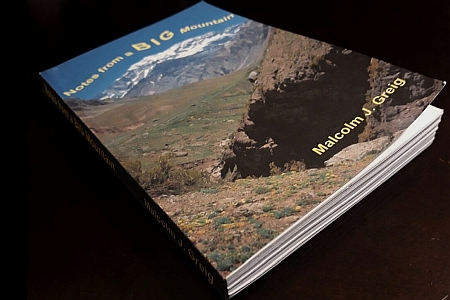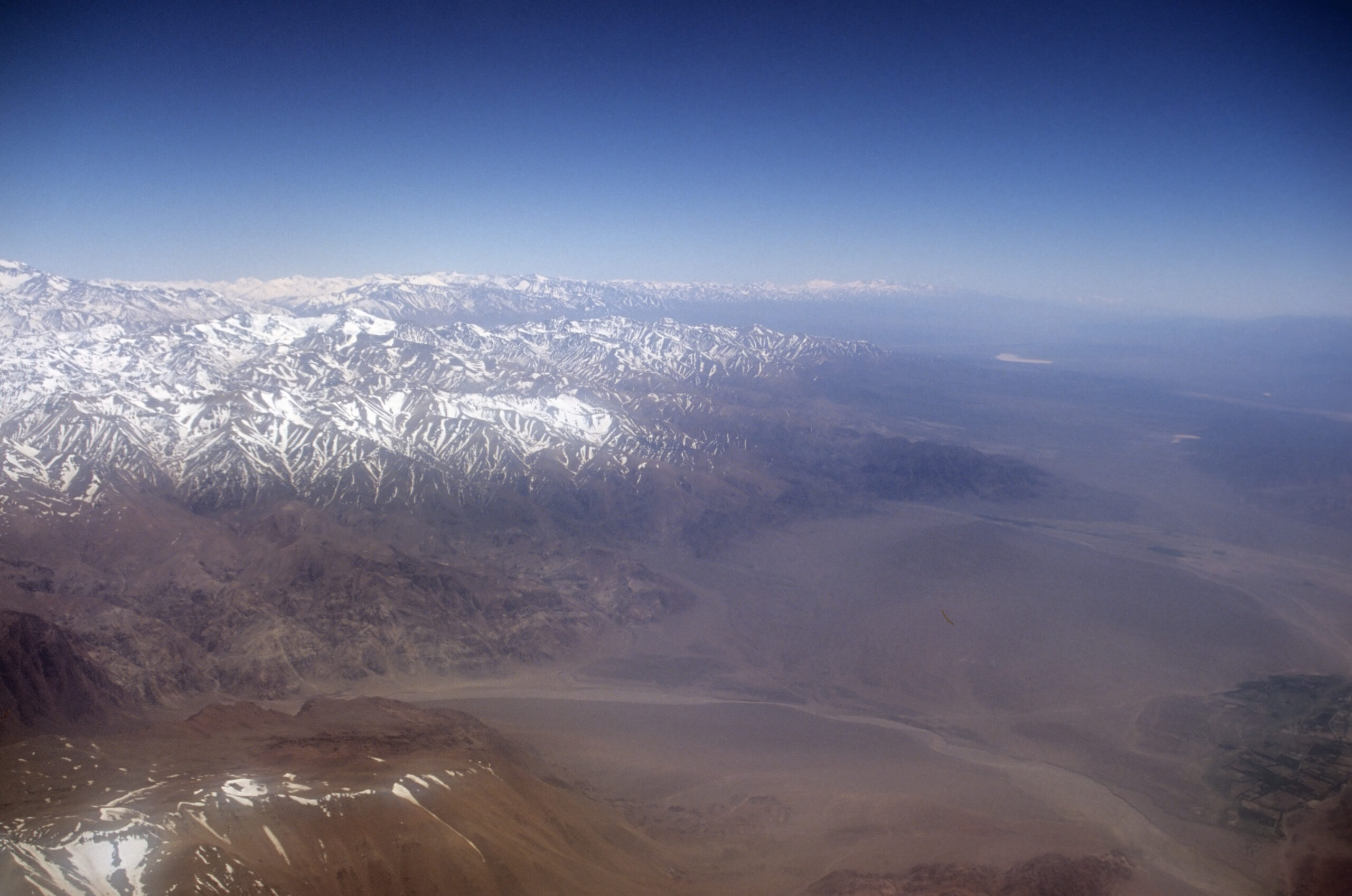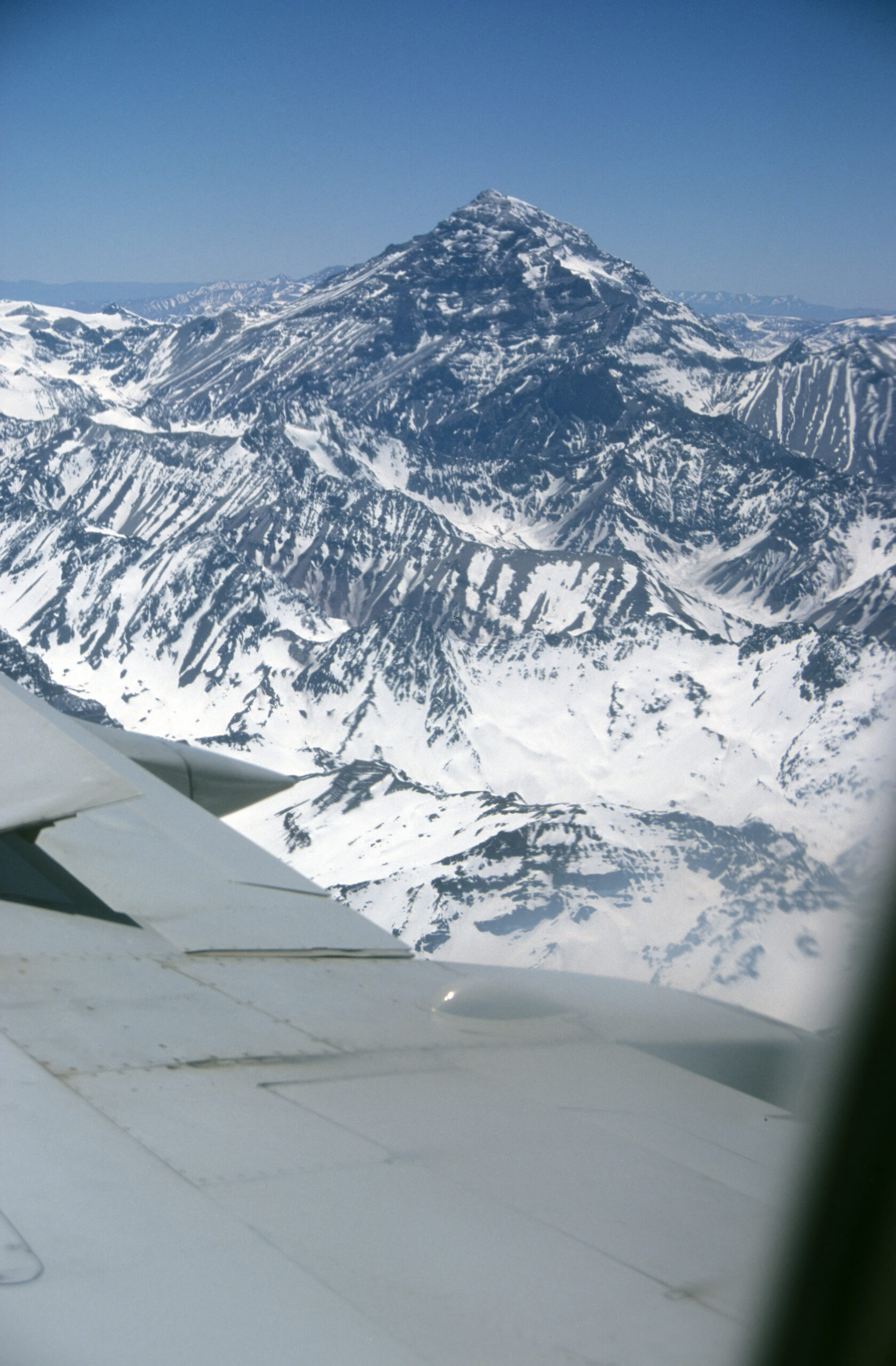“Es muy muy muy frio…”, the Argentine mountain guide was saying to me in slow Spanish, which I found all too easy to understand : “…it’s very very very cold..”. The date was 1st February 1991, the place was a mountaineering equipment shop in the city of Mendoza, Argentina, and I was in the lengthy process of being dissuaded from proceeding any further with an ambitious plan that I had been concocting over the previous few days. This Argentine guide was clearly accustomed to foreign travellers, such as me, wandering into his shop and naively asking for advice on how best to squeeze a quick ascent of Aconcagua in to their travel itinerary. He was therefore well practised in conveying, to all but the most promising candidates, that a failure to conquer the highest summit in the Andes does not necessarily make a tour of South America incomplete. In my case however, I was sufficiently advanced with my plan for him to have to go to level 2 of the tactful dissuasion process.
My problem was that a month previously I had delighted myself by climbing solo to the summit of Tungurahua, a 5016 metre volcano in Ecuador. This memorable addition to my South American travel itinerary had followed a spur-of-the-moment decision, and a quick visit to a shop in the nearby village to rent some ancient 10 point crampons together with a battered looking ice axe. Two days later Tungurahua had become the highest mountain I had ever climbed, and this ego-boost had made me enthusiastic about reaching yet greater heights in the Southern Andes. The Lonely Planet South American travel guide described Aconcagua in much the same way as it had described Tungurahua – essentially a high altitude walk with no glaciers or other technical climbing difficulties. I had also learnt from the guidebook that by good fortune I happened to be in the Aconcagua area at the ideal time of year for a summit attempt. I accepted that Aconcagua was nearly 2000m higher than Tungurahua, but if I made it to the top then I would really have something to crow about when I eventually returned home to the UK later that year. More significant was the fact that at 6960 metres (22,850 feet) Aconcagua was the highest mountain in the world outside the Himalayas / Karakoram. I had no particular aspirations to ever take up Himalayan mountaineering, so Aconcagua would presumably remain the highest mountain I would ever climb. Reaching the top would be a wonderful goal for someone like me, whose experience of mountaineering mainly consisted of walking, scrambling, and camping in the green hills of the British Isles. Only occasionally had I ventured to the use of ropes and ice tools, or reached a summit higher than 1500 metres.
The patient Argentine guide confirmed that mid January to mid February was indeed the best time for an attempt, because at other times of year snow and jet-stream winds usually make it impossible to reach the summit. However he explained that his brother, who happened to hold the current record for the fastest ascent of Aconcagua, had just returned from the summit, reporting that he had found the conditions desperately cold – the short summer climbing season seemed to be finishing early. In any case, it was stressed to me that even in good weather it was absolutely vital (“…fun-de-men-tal…”) to wear double thickness high altitude plastic boots, which I would clearly have to rent, along with down clothing, a strong tent, and a multitude of other things.
This all sounded rather discouraging, but what finally made me decide to leave Aconcagua for another occasion was when I was told that to have any chance of reaching the summit I would have to devote 15 to 20 days to the project. Even the walk-in to the Base Camp, a spot known as Plaza de Mulas, would apparently take me 3 days. I only had 30 more days before I was due to board the trans-polar flight from Buenos Aires to New Zealand on the next leg of my 11-month round-the-world trip. In those 30 days I wanted to see the Chilean/Argentine Lake District, Buenos Aires and several other places in Argentina, and make it right down to Tierra del Fuego. I decided that reaching the American continent’s southernmost point would have to compensate for not reaching the continent’s highest point.
Besides, it was easy to convince myself that I was merely postponing my attempt on Aconcagua. This was the first time I had set foot in Argentina, having crossed the Andes to Mendoza the previous day, and I already liked what I was seeing. After 3 months of overland travel through the less developed countries of Central and South America, Mendoza struck me as being an incredibly healthy, peaceful and attractive city, with its tidy tree-lined streets and beautiful leafy parks and plazas. The city was surrounded by vineyards, with the Andes clearly visible to the west; the climate was warm and seductive, and the girls were desperately pretty. I had a vague suspicion that I was in a part of the world to which I would want to return at some point in my life.
And so it was. A year and a half later, while working in Mexico, I took a month off to head for Argentina to go skiing and renew some friendships which I had made on my first visit, while hiking in the Chilean/Argentine Lake District. One thing, as they say, led to another, and in 1993 I had the good fortune to get a job in Argentina, working for WesternGeophysical Company as a field engineer on a petroleum exploration crew in Patagonia. Nevertheless, my postponed plan for an attempt on Aconcagua remained on my “pending list” for several years, because of the fact that the only feasible time of year for such an attempt was January. I invariably chose late December and January for my annual visit to the United Kingdom, in order to meet up with a large group of old friends at our regular New Year gathering in the English Lake District.
Then one day in November 1997 I boarded a LanChile airliner in Mendoza to fly over the Andes to Santiago. I had bought an apartment in the Chilean capital the previous year, to use as a home base while on leave from the job in Argentina. I had flown over the Aconcagua area before, but it had always been cloudy or dark, or I had not been sitting on the correct side of the aircraft. This time, however, I was on the right hand side, and there were hardly any clouds.
As the plane spiralled up from Mendoza airport, to gain the necessary height to cross the Andes, the gleaming mass of Aconcagua appeared, towering over the surrounding peaks. The pilot took the plane up to about 25,000 feet, in order to ensure a safe crossing of the snow capped mountain range. I had my camera ready as we got closer to Aconcagua, and we were barely abreast of the huge mountain when the pilot reduced power for the decent towards Santiago International Airport.
By this time my nose was flattened against the window, as I gazed at the vast black and white lump only 30km away to the north; the summit was barely any lower than the altitude at which the Boeing 737 was cruising. Within a minute or two the aircraft had descended below the level of the summit, my window had all but steamed up, and I had postponed my annual trip to the UK until May the following year.
I had suddenly decided that there was something else I had to do in January 1998…








It’s windy, grey and wet outside. Some more armchair travelling, great!
Oh, Malcolm! How I love reading of your adventures! I am so excited to see how this one turns out and who you meet along the way. 🙂
Estoy comenzando tu aventura. Coincido en tu comentrio sobre Mendoza, s una de las ciudades más lindas, de las que yo conozco, muy lindas las fotos.